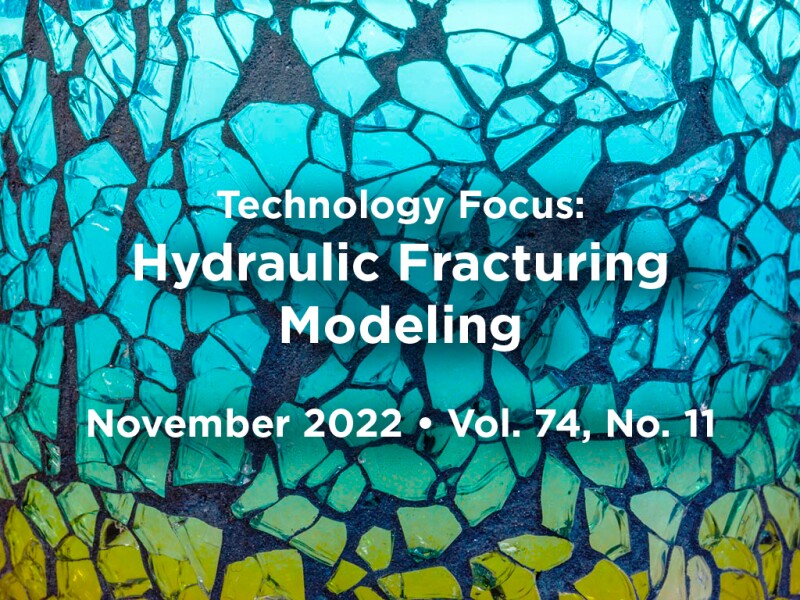Hydraulic fracture stimulation is proven to be the economic way to develop tight unconventional reservoirs. From an operational perspective, hydraulic stimulation is well established and widely applied to most unconventional plays. There is still room for improvement, however, to increase the efficiency and deepen the understanding of the detailed mechanism in the process. Particularly in the domain of fracture simulation, significant effort has been devoted to enhance model complexity and accuracy.
Recent simulation studies have covered sophisticated mechanisms such as hydraulic fractures—natural fracture interaction, proppant transportation and settlement, casing friction, new government equations of fracture propagation, and fracture roughness. Fully coupled fracture modeling work flows with stress variation, solid transportation, and fluid flow become the mainstream, while model complexity and budget tradeoff remains challenging.
Interestingly, fracture modeling has been applied beyond hydrocarbon production. New applications include cutting injection, coal-seam-gas production, and recently evolving enhanced geothermal systems (EGS). Both industrial and academic researchers have made progress on EGS by introducing another dimension of complexity in that thermal effects alter hydraulic fracture modeling behavior.
With the advancement of powerful measurement techniques in the past decade, the industry has seen novel ways to calibrate fracture models. Other than microseismicity and pumping-schedule history matching, data collected from downhole tools such as distributed temperature and acoustic sensing and fiber-optic sensors have broader applications and show promising results. By leveraging computational power and machine-learning approaches, scaled-up modeling on the field level energizes the study of well interference, the depletion effect, and frac‑hit-damage mechanisms.
This Month’s Technical Papers
Integrated Deep-Learning and Physics-Based Models Improve Production Prediction
Cloud Computing Optimizes Vaca Muerta Well Spacing, Stimulation Design
Study Investigates Mechanisms for Damage vs. Uplift in Different Basins
Recommended Additional Reading
SPE 205896 Offshore Cuttings Reinjection Well-Performance Diagnostics and Fractured Domain Mapping Using Injection Data Analytics and Hydraulic Fracturing Simulation, Verified Through 4D Seismic and Wireline Logging by Franz Marketz, Sakhalin Energy Investment Company, et al.
URTeC 2021-5414 Modeling of Distributed Strain Sensing and Distributed Acoustic Sensing Incorporating Hydraulic and Natural Fractures Interaction by Kildare George Ramos Gurjao, Texas A&M University, et al.
URTeC 2021-5526 Efficient Modeling of Enhanced Geothermal System With 3D Complex Hydraulic and Natural Fractures by Hongbing Xie, Sim Tech, et al.

Junjie Yang, SPE, is a lead reservoir engineer with Baker Hughes. He has 9 years of experience in the oil and gas industry. Yang’s specialties include analytical and numerical reservoir modeling, hydraulic-fracture modeling, and optimization. He is also skilled in data analytics as well as integrated statistical analysis in production forecasting, rejuvenation candidate selection, and field-development strategy optimization. Yang has been leading and contributing to multidisciplinary consulting projects from major conventional and unconventional plays across North America, including superhot rock geothermal asset stimulation and development. He holds a PhD degree in petroleum and natural gas engineering from The Pennsylvania State University.

